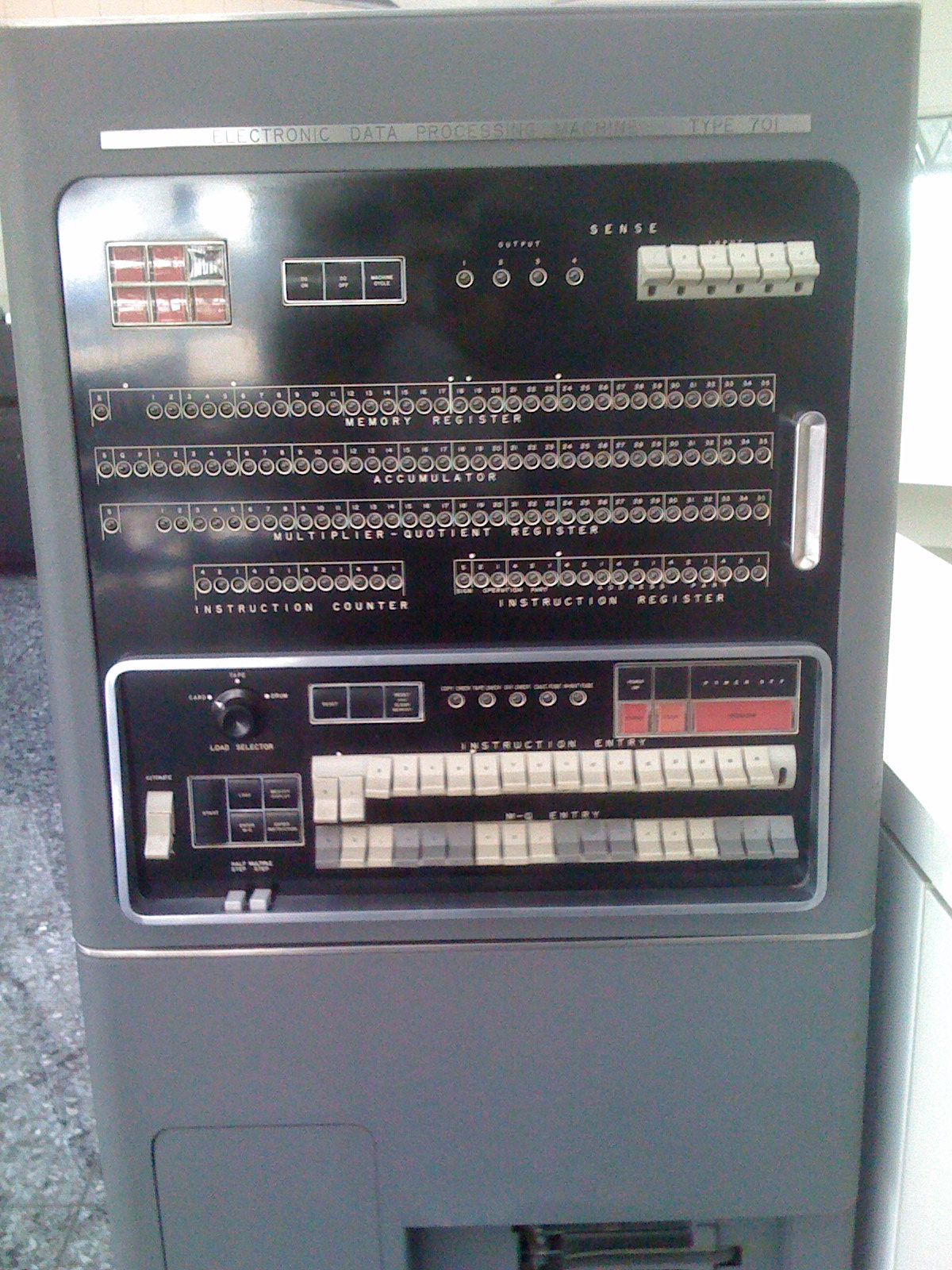Sense switch on:
[Wikipedia]
[Google]
[Amazon]
 A sense switch, or program switch, is a switch on the
A sense switch, or program switch, is a switch on the
 A sense switch, or program switch, is a switch on the
A sense switch, or program switch, is a switch on the front panel
A front panel was used on early electronic computers to display and allow the alteration of the state of the machine's internal CPU register, registers and computer memory, memory. The front panel usually consisted of arrays of electric light, ...
of a computer whose state can be tested by conditional branch instructions in software. Most early computers had several sense switches. They were typically used by the operator to set program options.
IBM's first commercial computer, the IBM 701
The IBM 701 Electronic Data Processing Machine, known as the Defense Calculator while in development, was IBM’s first commercial scientific computer and its first series production mainframe computer, which was announced to the public on May 2 ...
Defense Calculator, announced on May 21, 1952, had four lights and six switches on the upper right of its front panel marked Sense (see photo). The switches could be tested and the lights turned on or off under program control. The same number of sense switches and lights were on the front panels of all first and second generation machines in the IBM scientific computer line, the IBM 701
The IBM 701 Electronic Data Processing Machine, known as the Defense Calculator while in development, was IBM’s first commercial scientific computer and its first series production mainframe computer, which was announced to the public on May 2 ...
, IBM 704
The IBM 704 is the model name of a large digital computer, digital mainframe computer introduced by IBM in 1954. Designed by John Backus and Gene Amdahl, it was the first mass-produced computer with hardware for floating-point arithmetic. The I ...
, IBM 709
The IBM 709 is a computer system that was announced by IBM in January 1957 and first installed during August 1958. The 709 was an improved version of its predecessor, the IBM 704, and was the third of the IBM 700/7000 series of scientific compute ...
, IBM 7090
The IBM 7090 is a second-generation Transistor computer, transistorized version of the earlier IBM 709 vacuum tube mainframe computer that was designed for "large-scale scientific and technological applications". The 7090 is the fourth member o ...
and the IBM 7094.See photos in the respective articles IBM's Fortran language, first released for the 704, included statements to test the switches and set or reset the lights.
*IF (SENSE SWITCH i) n1, n2
*SENSE LIGHT i
*IF (SENSE LIGHT i) n1, n2
where n1 and n2 are statement numbers. SENSE LIGHT 0 reset all four lights. (2+51+1 pages)
On the IBM 1620
The IBM 1620 was a model of scientific minicomputer produced by IBM. It was announced on October 21, 1959, and was then marketed as an inexpensive scientific computer. After a total production of about two thousand machines, it was withdrawn on N ...
there are four switches, and their state can be tested via special forms of the IF-statement offered by the FORTRAN compiler for the IBM 1620. For the IBM 1130
The IBM 1130 Computing System, introduced in 1965, was IBM's least expensive computer at that time. A binary 16-bit machine, it was marketed to price-sensitive, computing-intensive technical markets, like education and engineering, succeeding th ...
there are sixteen switches matching the sixteen-bit word size of the computer, plus a toggle switch adjacent to the power on/off switch. These bit-switches are more normally used with the computer stopped to specify some memory address to be viewed (via the indicator lights on the front panel), or set. The state of these switches can be determined by a program, and so a running program might modify its behavior depending on the switches, such as change the amount of progress information printed, alter the tactics of a multi-variable optimization attempt, and so on. The IBM 1130 also has an "Interrupt Request" key associated with the console
Console may refer to:
Computing and video games
* System console, a physical device to operate a computer
** Virtual console, a user interface for multiple computer consoles on one device
** Command-line interface, a method of interacting with ...
printer, whose pressing might cause a suitably programmed long-running program to type a progress report on the console printer. In the more usual batch job environment, it was pressed by the computer operator to signal the operating system to terminate a running program that had perhaps overrun its allowed time, or commenced misbehavior such as repeatedly printing blank lines.
The front panel of the Data General Eclipse
The Data General Eclipse line of computers by Data General were 16-bit minicomputers released in early 1974 and sold until 1988. The Eclipse was based on many of the same concepts as the Data General Nova, but included support for virtual memo ...
computer has 5 sense switches, 16 address switches, and 5 control switches, as shown (left to right) in the figure at right.
Personal computers replace the function of fixed sense switches with the keyboard and screen user interface.
A typical running application has two modes: either it has nothing to do and awaits some user action, or, some action is in progress that will take a long time to complete. If a program does not regularly test the state of sense switches during a long calculation, they are ineffective at changing the program's operation.
References